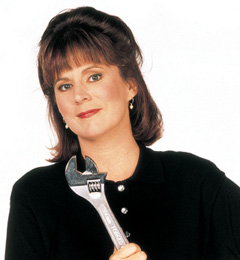 By the time you have passed through the post wood flooring installation phase, where all you want to do is just stare at it and admire the effect it has had on the look and feel of your home, it will be time to start thinking about some area rugs. Yes, they will hide portions of your new oak or walnut hardwood flooring, but they will also protect it and tie in other elements of your d?�cor.
By the time you have passed through the post wood flooring installation phase, where all you want to do is just stare at it and admire the effect it has had on the look and feel of your home, it will be time to start thinking about some area rugs. Yes, they will hide portions of your new oak or walnut hardwood flooring, but they will also protect it and tie in other elements of your d?�cor.
One of the most popular types of rug for wood flooring is the one that our early ancestors used back in colonial times, the braided rug. You may even be lucky enough to have one of these treasures that was hand-made by your grandmother or by those even longer ago. Many of these family heirlooms have been passed down for years.
Much like they did with quilts, past generations didn’t believe they had the luxury of throwing things away like we seem to think we can today, and so they used worn out clothing and bedding to make braided rugs to cover the cold wood floors of the family cabin. Women worked together, mothers, daughters and grandmothers creating the same rug.
Once mass manufacturing came along, machines took over doing most of the projects that had once been done by hand. The art of rug braiding did experience somewhat of a revival late in the twentieth century. By then the nostalgia for simpler times when quality mattered more than quantity led to many of the older crafts making a comeback. Today, while most braided rugs are manufactured using machines, there are those who braid by hand. Those looking for that perfect rug can have one commissioned in the shape, color and style that will uniquely fit their home.
If hand-made is not a priority for you, it is still possible to get find beautiful, quality-constructed braided rugs in just about any price range. There are two basic types; cloth braided and yarn braided rugs. Those made from yarn are far more common and few manufacturers deal with cloth anymore. Both types, unlike the ones made in earlier times, consist of an inner core composed of filler material around which is wrapped yarn or cloth. This filler core reduces the amount of cloth or yarn needed which brings down the cost of production. Higher-end rugs will have filler of cotton, preferably natural and pre-shrunk or a synthetic fiber. Paper or some sort of reprocessed material will be found in cheaper brands.
Something you might want to consider before heading to your local rug outlet or buying online. You may not be one of the more fortunate ones whose family passed one of these treasures along, but lots of families had them. Many have ended up in flea markets and second hand stores. In the end, we all share a common history. Who’s to say that a hand-made, braided rug found in one of these places doesn’t have a story to tell that you might be interested in?
